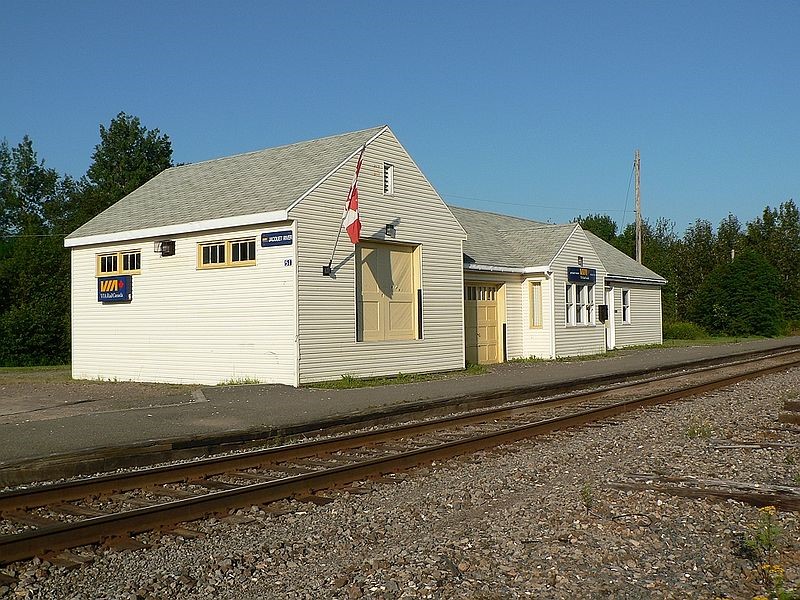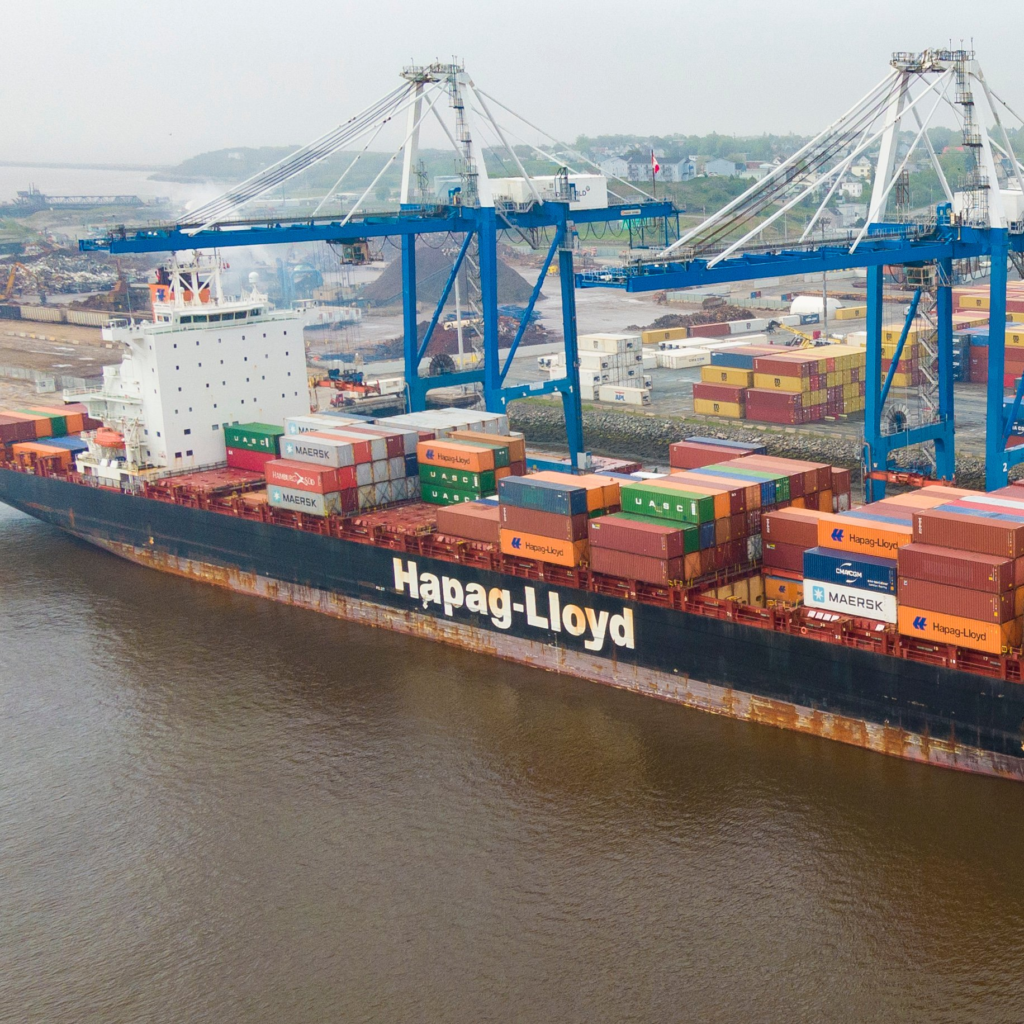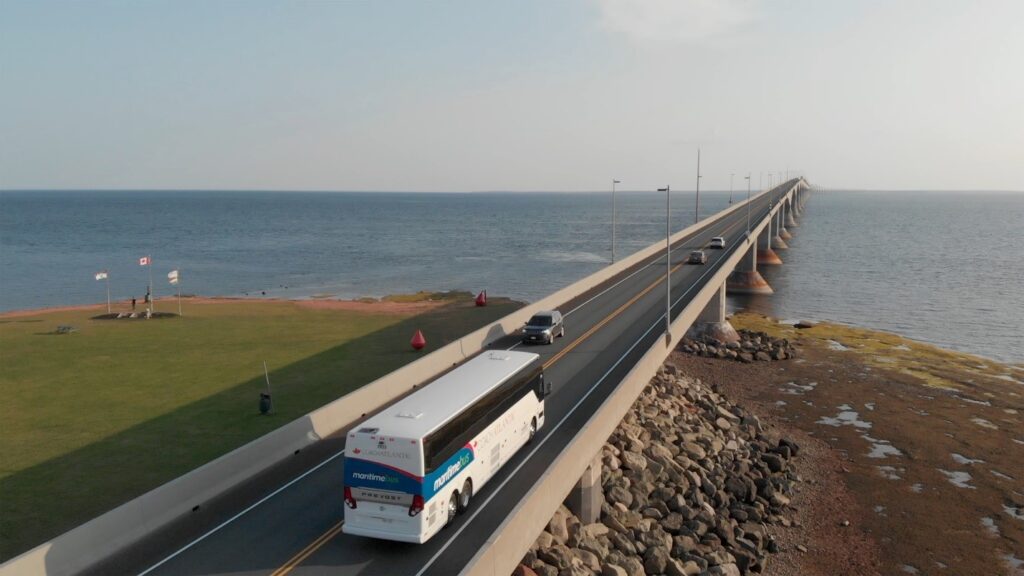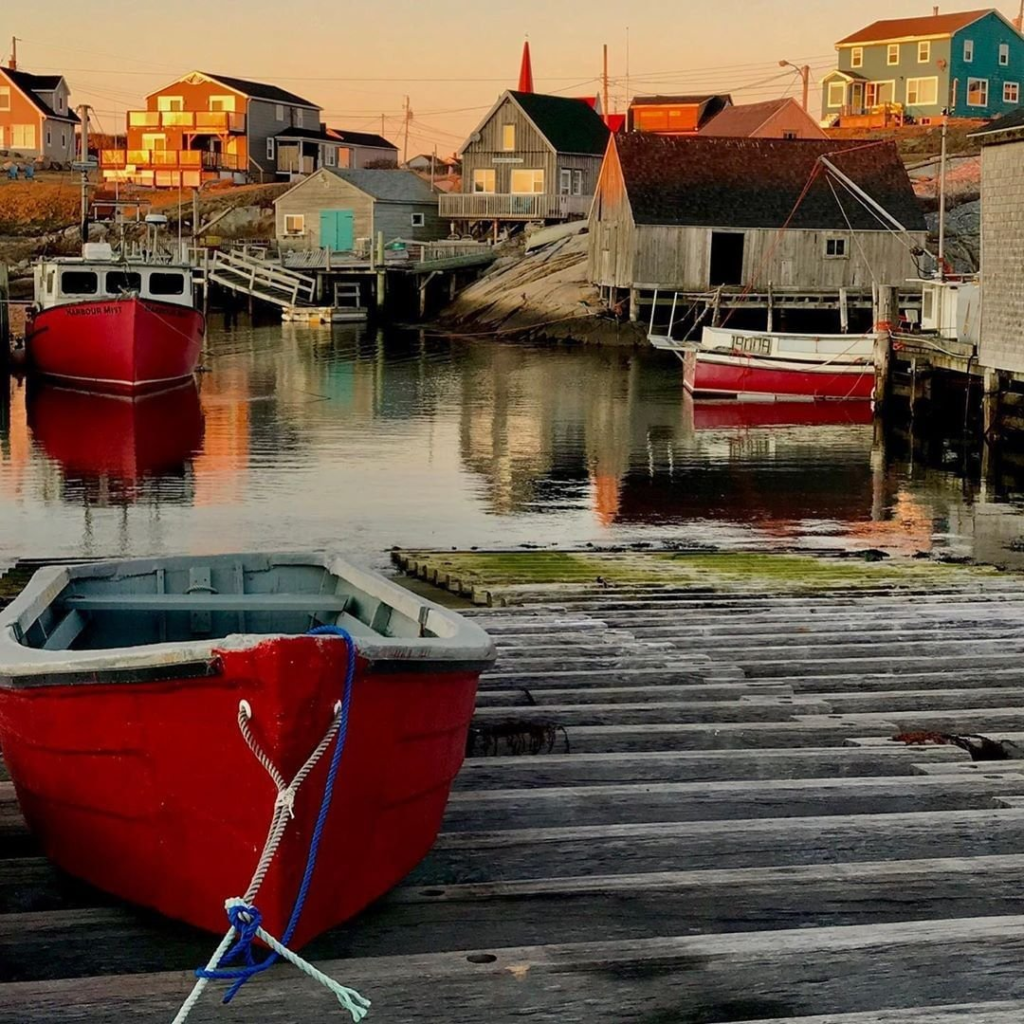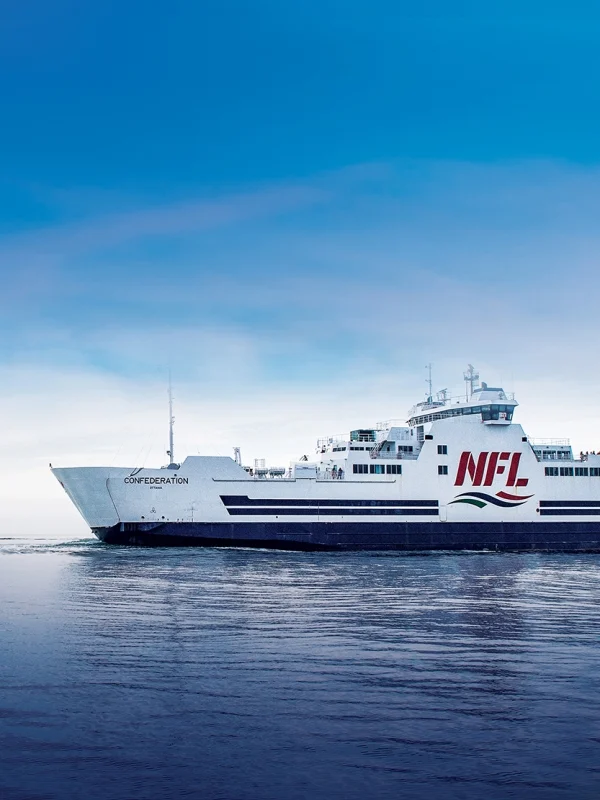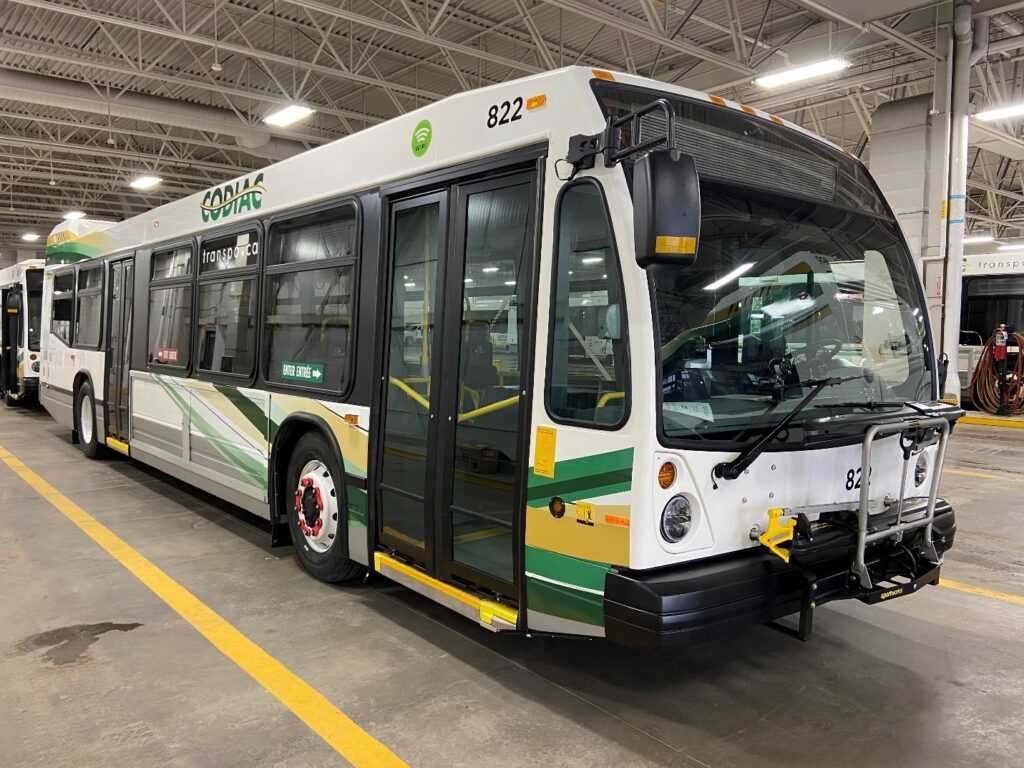
Transport Action Atlantic is an all-volunteer, non-partisan advocacy organization. Our goal is to promote convenient, affordable and sustainable public transportation for all Atlantic Canadians. With Nova Scotians set to head to the polls on August 17, 2021, we believe it is important – and reasonable – to ask candidates of all political persuasion where they stand on the transportation issues we believe are important to the province and its future.
TAA has submitted the following six questions to each of the recognized parties running in this provincial election. In the post below, we have included any answers that we have received to date, and will continue to add any others as we receive them. You can use the handy links below to jump straight to the topics of most interest to you, or scroll down to read through all six topics:
- Rail service in Cape Breton
- Public transit across municipal boundaries
- Lack of scheduled public transit in much of the province
- Reducing emissions from transportation
- Halifax’s BRT and ferry plans
- Public transit recovery from COVID-19
*UPDATE: As of August 16, we have received responses from the Nova Scotia NDP, the Liberal party, and the Green Party of NS. We have included those below, in the order they were received, and will continue to update this post with responses from the other parties as we receive them.
Questions:
1. What actions will your government take to restore active freight rail service to the industrial areas of Cape Breton?
NDP: An NDP government would consider a public option for the rail line in Cape Breton, to thereby support the Port of Sydney and the economic potential of the industrial areas.
Liberal: Our government has been paying monthly subsidies, currently $30,000 a month since the railway ceased operations in 2015. This monthly payment is to keep the railway from being abandoned by the operator and to preserve the line for a potential future Sydney container pier or other commercial use cases if they should materialize. Should Sydney secure a container operator then a conversation about any necessary infrastructure would occur. Prior to being able to commit to a rehabilitation project a feasible business case and willing railway operator would need to be in place.
Green: There is a symbiotic relationship between several processes here:
● Freight service of cargo to Newfoundland through the North Sydney ferry terminal.
● General transport of cargo to large-scale shippers either into or out of (or both!) Cape Breton.
● The proposed Sydney Harbour Novaporte development.
● Existing cargo rail traffic along the active portion of the CBNS Railway
● A hopeful future passenger service that could extend to Sydney, and perhaps as far as the campus of Cape Breton University.
The Greens acknowledge that a plan which requires Novaporte or passenger service in order to be viable is too fragile to be realistic. However, it is our opinion that cargo traffic destined for Newfoundland could be returned to rail through strategic investments in:
● A modern trans-shipment facility in North Sydney
● The Grand Narrows Bridge
● Railbed improvements throughout Cape Breton
These items are not a menu, from which only one or two can be selected – unless all three are done, rail cargo will not return. We believe that this is a much more effective package of investments than highway-twinning (and, in fact, will eliminate much demand for it). Greens will undertake (or support) these investments.
2. Current regulatory barriers make it arduous for municipalities to launch or operate public transit services that cross municipal boundaries. Will your government commit to addressing these regulatory hurdles to make it easier for inter-municipal transit services to operate?
NDP: Yes, an NDP government will address these regulatory hurdles in the course of working with community transportation and transit providers to provide a reliable and affordable network across the province. This is an important environmental and economic element to a connected Nova Scotia.
Liberal: On July 7th, the Growth Council released the first set of recommendations focused on short-term, immediate actions aimed at supporting Nova Scotia’s post-pandemic economic recovery. In response to the council’s recommendations, the Liberal government will expand and deepen its regulatory burden reduction target and remove an additional $30 million in unnecessary regulatory burden to ease business start-up and growth by the end of 2022. We will waive all regulatory fees for businesses in their first two years, create a one-stop shop for start-up permits, and enhance provincial and municipal collaboration to ensure adequate housing strategy for housing of all types. A re-elected Liberal Government will continue to look for ways to reduce the regulatory burden of small and medium businesses where possible. We will continue to make Nova Scotia a province that is ready for investment and a business environment where start-ups thrive. Based on the recommendations of the Economic Growth Council the Liberal government is committed to the goal of enhancing provincial and municipal collaboration to ensure business and services can thrive and work together.
Green: Greens will commit to this. From our platform: (The GPNS will…) “Remove barriers for community public transit systems to operate on a regional (across municipal lines) basis”. Primarily, here, we will remove public transport systems that cross municipal boundaries from the auspices of the UARB, freeing municipalities to sign simple and flexible memoranda of understanding to implement services.
3. There is currently no scheduled public transportation service to most of southwestern Nova Scotia, and very limited options for other areas like the Eastern shore. What actions will your government take to ensure that affordable and reliable public transportation is provided between communities all across the province, allowing people to live and thrive in these communities?
NDP: The NDP will work with Transport Action Atlantic, the Rural Transportation Association and the specific community transit and transportation providers to identify gaps in service and a timetable to fill those gaps, and to establish service standards for transportation providers. The strategy will take effect through a multi-year plan to
create or expand providers, buy equipment needed to meet the service standards, ensure affordable fares, keep potential users aware of the services available, and meet environmental goals such as those required to help avoid catastrophic climate change.
Liberal: Our government has long been proud to support the Rural Transportation Association. In areas of the province that do not have scheduled public transportation organizations like MusGo Rider on the Eastern Shore, Hope Dial-a ride in Yarmouth and Transport de Clare in Clare and Digby among others, offer low-cost door-to-door transportation services from individuals who need it. The Liberal government committed $4.7 million to improve access to public transportation across Nova Scotia with twenty-six projects receiving funding through the Community Transportation Assistance Program this year. This funding includes more than $1.8 million in operating funding to 19 door-to-door community transportation services. Reliable community transportation allows people to access services, including going to work, shopping, attending medical appointments and getting their COVID-19 vaccines. The Public Transit Assistance Program is providing $2,925,000 to municipalities and community organizations providing fixed-route transit services. The funding is used towards capital purchases such as new buses.
Green: From our platform: (The GPNS will…) “Serve every community of more than 1000 people in Nova Scotia by minimum-twice-daily bus service, connecting it to neighbouring communities and regional centres.” This would mean a twice daily service to all the larger communities of the South Shore (Chester, Lunenburg, Bridgewater, Liverpool, Shelburne, Yarmouth), connecting to a service through the Annapolis Valley and beyond. The Green Party will consult on the most effective way to implement this in specific, but currently envisions a small Crown Corporation that would manage schedules, ticketing and contract administration, with the actual operation of the motorcoaches and routes tendered on a periodic – perhaps five-yearly – basis.
4. Transportation is responsible for the second-largest portion of our Province’s carbon emissions (after electricity generation). What would be your government’s strategy for reducing transportation’s carbon emissions?
NDP: An NDP government would set and meet the strongest emission reduction target that has been recommended, a 50% reduction from 1990 levels by 2030. Although significant reductions in power generation and buildings can be achieved more rapidly, the NDP climate strategy will also promote transit and community transportation, an active transportation strategy to increase trails and other connections that create walkable and accessible routes in many communities as well as investing to complete the Blue Route. An NDP government will pursue electrification of transport by implementing an electrification strategy as Nova Scotia’s electricity system is further decarbonized.
Liberal: The Nova Scotia government is investing more than $37 million to help bring 60 new battery-operated, electric buses to Halifax Regional Municipality. Once in service they are expected to reduce greenhouse gas emissions by 3,800 tonnes annually by 2030. The electric fleet will be the first of its kind in Atlantic Canada. We continue to aggressively pursue action to reduce greenhouse gas emissions. Expanding Halifax Transit’s fleet to include new electric buses will not only improve the capacity of public transit, but it will help us achieve our ambitious climate change goal of reaching carbon neutrality by 2050. It puts us at the forefront of transit electrification in Atlantic Canada. Funding will also be used to purchase related charging equipment and expand the Ragged Lake Transit Centre to accommodate the new fleet. The facility will also undergo a deep energy retrofit, including solar panels, to achieve a net-zero standard.
We have also recently committed $300,000 for the first phase of a study to bring electric transit buses to Cape Breton Regional Municipality (CBRM). By partnering with the federal government and CBRM, the province is able to establish the infrastructure that allows for e-buses, starting with a net-zero electric bus maintenance facility and a community transit hub.
Green: Our primary focus is on limiting the number of single-occupant vehicle trips and single-container-load road-driven cargo trips. This leads to our focus on public transportation, active transportation and rail cargo. However, we also strongly support the electrification of the remaining vehicle trips (which will, of course, remain as a large portion of the overall traffic for some time, even with significant reductions).
5. Will your government commit to supporting Halifax’s ambitious Bus Rapid Transit plan, the major component of the city’s rapid transit strategy? Will you continue to support the electric fast ferry project that has recently entered the planning stages?
NDP: Yes. The NDP recognizes that the climate emergency and population growth make it important to improve transit in HRM and across Nova Scotia. Transit improvements are a proven means of reducing the use of non-renewable resources while making life better and more affordable. An NDP government will contribute to the capital costs of new ferry services and to costs of Bus Rapid Transit, based on planning studies and specific HRM proposals.
Liberal: Our government leveraged a $37 million provincial investment to advance a $112 million bus electrification partnership with federal and municipal governments. This partnership is creating the first fleet of electric busses in the Halifax Regional Municipality (HRM), by adding 60 battery operated vehicles to the network. The fleet will reduce GHG emissions by 3,800 tonnes every year they are in operation, preserving air quality and moving Nova Scotians affordably around the region. We are currently a funding partner investing $1.1 million in the initial planning phase for a commuter ferry that will travel from a new terminal in Bedford to Halifax’s downtown ferry terminal. The total investment of $3.3 million from the municipal, provincial, and federal governments will also explore technology options for an electric ferry. We are excited to see the outcome of the study and look forward to continuing progress with the
municipal and federal levels of government. Upon completion of this phase, a Rankin government will approve funding to build and launch this new Bedford ferry service. This will remove thousands of cars from the highways to downtown Halifax easing congestion, reducing emissions, and improving traffic flow.
Green: We strongly support Halifax’s BRT plan – BRT has the potential to be a game-changing infrastructure investment that will significantly improve the quality of life in Halifax. We generally support the electric fast-ferry project, but believe that it should not be prioritised ahead of investments in BRT, active transportation infrastructure, and inter-city public transportation.
6. How will your government help the public transportation and transit sector recover from the costs and challenges brought by the COVID-19 pandemic?
NDP: Canada stands out for its success in sustaining economic activity and household income during the pandemic, thanks to Jagmeet Singh and the NDP’s decision to be a willing partner with the federal government so long as adequate economic and support measures were taken. An NDP government of Nova Scotia will support the approach that has been taken to limit the economic harm to systems like public transportation, recognizing that this is primarily a Canada-wide challenge.
Liberal: Improving access to community transportation is a cornerstone of the government’s Poverty Reduction Blueprint, Community Transportation Action Plan and is identified as a priority in SHIFT Nova Scotia’s Action Plan for an Aging Population. The province is investing $4.7 million to improve access to public transportation across Nova Scotia. Twenty-six projects will receive funding through the Community Transportation Assistance Program and the Public Transit Assistance Program this fiscal year. The Community Transportation Assistance Program is providing more than $1.8 million in operating funding to 19 door-to-door community transportation services. The Public Transit Assistance Program is providing $2,925,000 to municipalities and community organizations providing fixed route transit services. The funding is used towards capital purchases such as new buses. Our Liberal Party is committed to continue what we have started with huge investments in active transportation networks across the province. Examples of some recent investments include $1.2 million to complete the Town of Kentville’s active transportation network, $1.3 million to build two kilometres of new multi-use pathways and active transportation bridges to create a connected active transportation network in the Town of Antigonish, $1 million to build seven kilometres of new multi-use pathways and crossings in Port Hawkesbury, $500,000 to help build an active transit path in East Preston, and nearly $790,000 in the Town of Yarmouth’s active transportation network. We are proud of the positive impacts that these projects will have on the health and wellness of Nova Scotians, the environment, the tourism industry and the local economies of small towns throughout the province for generations to come.
Green: All of the above actions, as well as others in our platform, will have a significant positive effect on the recovery. In particular, we believe that the proposed inter-city bus network will provide significant business growth opportunities for companies and people in the sector. We do not foresee – or want – a return to what we had before. Our recovery should not be an attempt to “undo” or “reverse” changes that have happened in the last 18 months. Rather, it must be growth in the directions we need and want. Public transportation is critical to that.
*In addition to their responses to our six questions, the Green party provided the following contextual paragraph to accompany their questions. We’re including it here for full context of their reply. They wrote: “It is our opinion that rail is a more efficient, community-focussed, lower-carbon-footprint and generally healthier way to accomplish all long-distance transportation needs (of goods or people) between major centres. Generally, the vast majority of the services
provided by a large inter-city (“twinned”) highway can be accomplished for less money, with a lower ecological footprint, and in a fashion that is healthier for the communities that it serves, by rail. We will bring that principle to bear on all these questions, while remaining cognizant of the economic and political realities of the real world. For example, we recognize that it is highly unlikely that the railway along the Eastern Shore, or to Yarmouth, will be re-activated in any foreseeable near-term future, while believing in a world where electrified rail transport on major arteries in Nova Scotia is not out of the question.”








